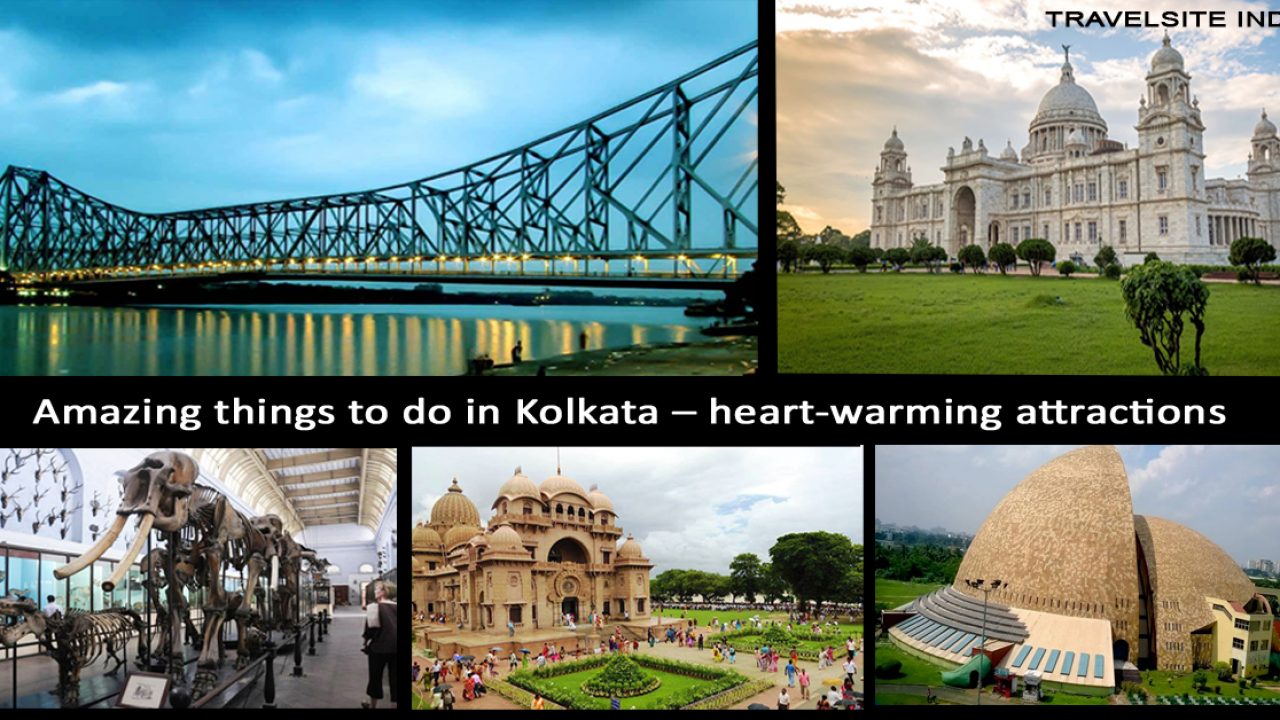Exploring Kolkata: Must-Visit Tourist Places in the City of Joy
Explore Kolkata’s diverse and vibrant attractions—it’s a city that never stops enchanting its visitors! #KolkataTourism #CityOfJoy 🌆😊
Are you ready for an enchanting journey through the cultural heart of India? Welcome to Kolkata, where history, art, and tradition come alive in every corner. Join us as we explore the top tourist places that make this city truly extraordinary.
Kolkata’s rich history, vibrant culture, and warm hospitality make it a unique destination for travelers. Whether you’re interested in history, art, food, or simply soaking in the city’s ambiance, Kolkata has something to offer for everyone.
Here are the most tourist attractions must visit in Kolkata:
1. Victoria Memorial:
Victoria Memorial, a masterpiece in marble, stands as a testament to Kolkata’s royal heritage. Get ready to be transported to a bygone era! 🏛️✨ #KolkataDiaries #Heritage
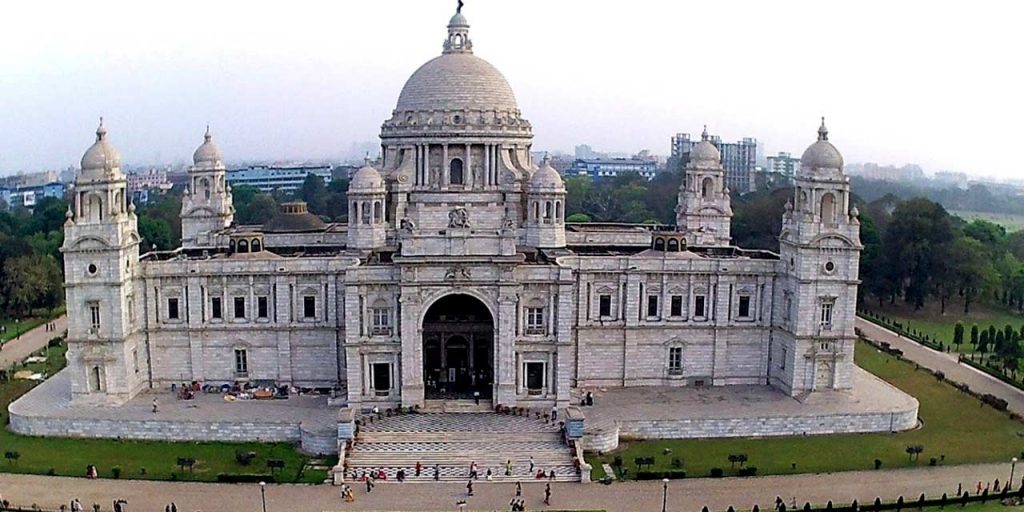
-
Historical Landmark: Victoria Memorial is an iconic historical monument located in Kolkata, West Bengal, India. It was built in honor of Queen Victoria of the United Kingdom.
-
Architectural Marvel: The memorial is a stunning example of Indo-Saracenic architecture, combining elements of British and Mughal styles.
-
Built in 1921: The foundation stone of the Victoria Memorial was laid in 1906, and the memorial was inaugurated in 1921. It was funded by the people of Bengal.
-
Museum and Art Gallery: The memorial houses a museum and art gallery that showcases a vast collection of art, sculptures, and historical artifacts from the colonial era. It offers insights into the history and culture of India during the British Raj.
-
Exquisite Gardens: The memorial is surrounded by beautifully landscaped gardens, adding to its charm. The gardens are a popular spot for picnics and leisurely walks.
-
Light and Sound Show: Victoria Memorial offers a captivating light and sound show in the evenings, narrating the history of Kolkata and the British era. It’s a must-see for visitors.
-
Central Dome: The central dome of the memorial is a prominent feature, and its height and grandeur make it visible from various parts of the city.
-
Historical Significance: The memorial is not only a tribute to Queen Victoria but also a symbol of the cultural heritage and historical significance of Kolkata.
-
Cultural Events: Various cultural events, exhibitions, and seminars are held at Victoria Memorial, making it a hub for intellectual and artistic activities.
-
Visitor’s Center: There’s a visitor’s center with informative displays about the memorial’s history, architecture, and the period it represents.
-
Accessibility: Victoria Memorial is centrally located in Kolkata, making it easily accessible by public transportation and a popular stop for tourists exploring the city.
-
Photographer’s Paradise: The stunning architecture and picturesque surroundings make Victoria Memorial a favorite spot for photographers.
2. Howrah Bridge:
From Howrah Bridge, the iconic symbol of Kolkata, the view of the Hooghly River at sunset is nothing short of mesmerizing. 🌉🌅 #HowrahBridge #KolkataViews
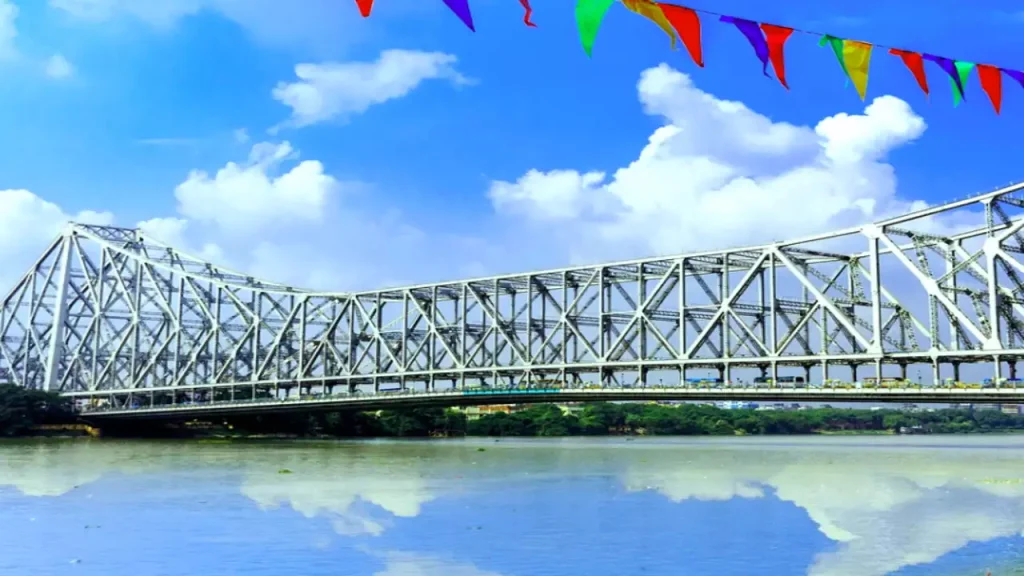
-
Iconic Landmark: The Howrah Bridge, officially known as the Rabindra Setu, is one of Kolkata’s most iconic landmarks and a symbol of the city.
-
Historical Significance: It holds immense historical significance, as it was completed in 1943 during World War II, replacing a pontoon bridge. It was named after Rabindranath Tagore, the renowned Bengali poet, and Nobel laureate.
-
Architectural Marvel: The Howrah Bridge is a cantilever truss bridge and was one of the first such bridges in India. Its design combines both aesthetic appeal and engineering excellence.
-
Strategic Location: It spans over the Hooghly River, connecting the city of Kolkata to the district of Howrah. It serves as a vital transportation link for both pedestrians and vehicles, including trains.
-
No Nuts and Bolts: Remarkably, the Howrah Bridge was constructed without any nuts or bolts; instead, it uses rivets to hold the structure together.
-
Lifeline of Kolkata: The bridge is often referred to as the “lifeline of Kolkata” because of its pivotal role in connecting the two sides of the city, which are divided by the Hooghly River.
-
24/7 Accessibility: The Howrah Bridge is open 24 hours a day, seven days a week, and it’s one of the busiest bridges in the world in terms of daily traffic.
-
Spectacular Views: The bridge offers spectacular views of the Hooghly River and the Kolkata skyline, especially during sunrise and sunset. It’s a popular spot for photography and sightseeing.
-
Pedestrian Path: The bridge has a dedicated walkway for pedestrians, allowing them to take a leisurely stroll and enjoy the scenic beauty of the river.
-
Cultural Significance: It is often featured in Bollywood and Tollywood (Bengali film industry) movies, making it a cultural icon in addition to its architectural importance.
-
Annual Celebrations: Every year, on December 26th, the anniversary of the bridge’s inauguration is celebrated with various events and activities.
-
Engineering Feat: At the time of its construction, the Howrah Bridge was the third-longest cantilever bridge in the world, showcasing India’s engineering prowess.
3. Indian Museum:
The Indian Museum is a treasure trove of knowledge, showcasing centuries of art, culture, and history under one roof. 🏺🎨 #IndianMuseum #Artifacts
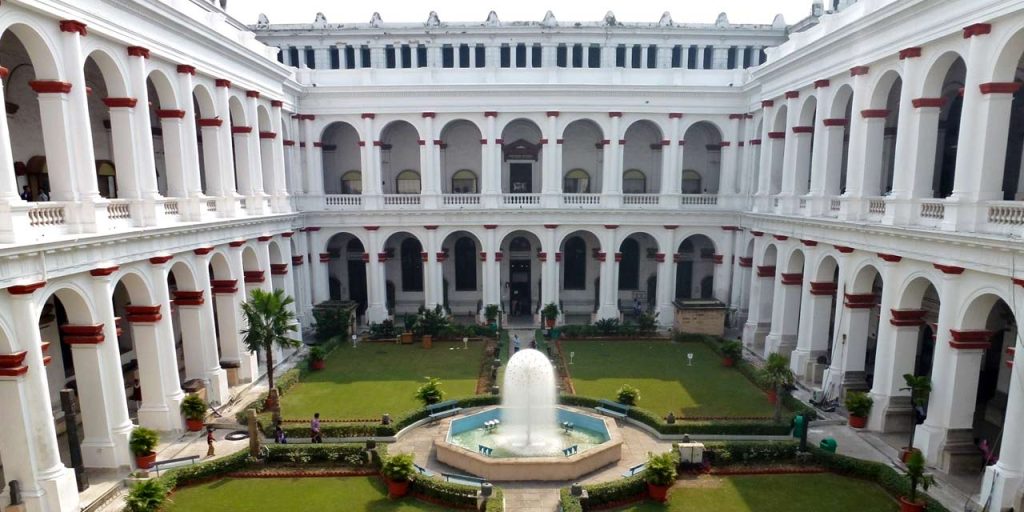
-
Oldest Museum in India: The Indian Museum, established in 1814, is the oldest museum in India and one of the oldest in Asia.
-
Location: It is located in Kolkata, West Bengal, and is situated near the intersection of Chowringhee Road and Sudder Street, making it easily accessible.
-
Architectural Beauty: The museum’s architectural style is a blend of Indian and British designs, reflecting the Indo-Saracenic architectural style popular during the British colonial era.
-
Collections: The Indian Museum boasts an extensive and diverse collection of over 100,000 artifacts, including art, sculptures, manuscripts, fossils, and more.
-
Galleries: It has several galleries dedicated to different categories of artifacts, including archaeology, art, anthropology, geology, zoology, and botany. Each gallery provides a comprehensive view of India’s cultural and natural heritage.
-
The Egyptian Mummy: One of its most famous exhibits is the Egyptian mummy, which draws visitors from around the world. It is one of the few museums in India to house such an artifact.
-
Bharhut and Sanchi Stupas: The museum has a remarkable collection of sculptures and artifacts from the famous Buddhist sites of Bharhut and Sanchi, shedding light on India’s ancient Buddhist heritage.
-
Prehistoric Artifacts: It also houses prehistoric artifacts, including tools, pottery, and fossils, offering insights into India’s ancient history.
-
Coin Gallery: The museum’s coin gallery is particularly noteworthy, showcasing a vast collection of ancient and historical coins from various periods.
-
Educational Programs: The Indian Museum conducts educational programs, workshops, and exhibitions to promote awareness and understanding of Indian history and culture.
-
Renovation: The museum has undergone renovations and modernization to enhance visitor experiences and preserve its valuable collection.
-
Cultural Heritage: It plays a crucial role in preserving and showcasing India’s rich cultural heritage and history.
-
Visitor Experience: The museum provides an engaging and informative experience for visitors of all ages, making it a must-visit destination for history and art enthusiasts.
4. Dakshineswar Kali Temple:
Seeking spiritual solace? Dakshineswar Kali Temple, nestled by the river, is a serene haven for devotees and seekers alike. 🙏🌊 #KaliTemple #Spirituality
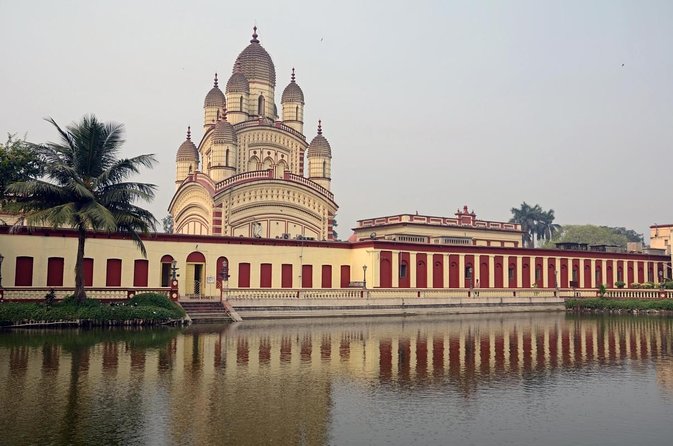
-
Location: Dakshineswar Kali Temple is situated on the eastern bank of the Hooghly River, in the Dakshineswar area of Kolkata, West Bengal, India.
-
Dedication: The temple is dedicated to Goddess Kali, a powerful and revered deity in Hinduism. It is one of the most important Kali temples in India.
-
Founder: The temple was built by Rani Rashmoni, a philanthropist and devotee of Goddess Kali, in 1855. It was designed by the architect Janakinath Mullick.
-
Architectural Style: The temple’s architectural style is primarily of the traditional Bengali “Navaratna” temple design, featuring nine spires or towers.
-
Goddess Kali: The main deity of the temple is a magnificent idol of Goddess Kali. She is depicted in her fearsome form, adorned with a garland of skulls and a protruding tongue.
-
River Ghat: The temple complex includes a ghat (steps leading to the river) on the Hooghly River, where devotees can take holy dips and offer prayers.
-
Pilgrimage Site: Dakshineswar Kali Temple is a significant pilgrimage site for devotees of Goddess Kali and attracts thousands of worshippers and tourists throughout the year.
-
Rani Rashmoni’s Legacy: Rani Rashmoni’s contributions to the temple and her dedication to the goddess are celebrated, and her shrine is part of the temple complex.
-
Ramakrishna Paramahamsa: The temple is closely associated with the famous 19th-century mystic and saint, Sri Ramakrishna Paramahamsa, who served as the temple priest for a significant portion of his life. His room, where he lived and meditated, is preserved within the temple complex.
-
Spiritual and Cultural Hub: Beyond its religious significance, Dakshineswar Kali Temple is a center for spiritual and cultural activities, including regular devotional music and dance performances.
-
Festivals: The temple celebrates various Hindu festivals with great enthusiasm, including Kali Puja, Durga Puja, and Diwali, attracting large gatherings of devotees.
-
Visiting Hours: The temple is open to visitors during specific hours, and it’s advisable to check the timings before planning a visit.
-
Aesthetic Beauty: The serene surroundings, exquisite architecture, and spiritual ambiance of Dakshineswar Kali Temple make it a tranquil and visually appealing place to visit.
-
Heritage Preservation: The temple complex has undergone restoration and conservation efforts to preserve its historical and architectural significance.
5. Park Street:
Park Street is where Kolkata’s heart beats the loudest. Explore a world of culinary delights and vibrant nightlife! 🍽️🎶 #ParkStreetVibes #FoodieHeaven
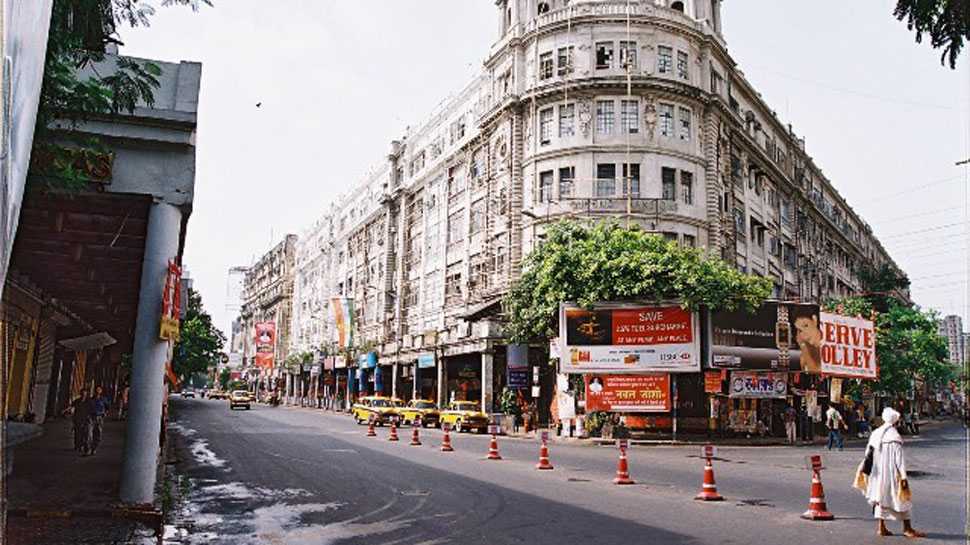
-
Location: Park Street, also known as Park Street Avenue, is a famous thoroughfare located in the heart of Kolkata, West Bengal, India.
-
Historical Significance: Park Street has a rich historical legacy dating back to the British colonial era when it was one of the main streets for leisure and entertainment.
-
Cultural Hub: Often referred to as the “Food Street of Kolkata,” Park Street is renowned for its vibrant culinary scene and nightlife, making it a cultural and entertainment hub.
-
Restaurants and Cafes: Park Street is home to a plethora of restaurants, cafes, and eateries serving a wide variety of cuisines, from traditional Bengali dishes to international delicacies.
-
Iconic Eateries: The street is famous for iconic establishments like Flurys, Peter Cat, and Mocambo, known for their delicious food and historic charm.
-
Nightlife: As the sun sets, Park Street comes alive with pubs, bars, and nightclubs that offer music, dancing, and a lively atmosphere.
-
Shopping: Park Street offers shopping opportunities, including boutiques, bookstores, and souvenir shops.
-
Landmarks: It is home to several iconic landmarks, including St. Xavier’s College, Asiatic Society, and South Park Street Cemetery.
-
Festivals: During festivals like Christmas and New Year’s Eve, Park Street is beautifully decorated with lights and becomes a major attraction for celebrations.
-
Music and Arts: The street has a rich musical and artistic heritage and is known for hosting live music performances and art exhibitions.
-
Accessibility: Park Street is easily accessible by public transportation, including buses and the Kolkata Metro.
-
Historic Architecture: It features colonial-era architecture, with buildings that showcase a blend of British and Indian architectural styles.
-
All-Year Attraction: Park Street is a year-round attraction, offering something for everyone, whether you’re a food enthusiast, music lover, or simply looking for a vibrant atmosphere.
-
Local Culture: It provides a glimpse into the local culture and lifestyle of Kolkata, making it a must-visit destination for tourists and residents alike.
6. Shantiniketan:
Shantiniketan, just a few hours away, is a tranquil escape into Tagore’s world of creativity and tranquility. 🌳📚 #Shantiniketan #TagoresLegacy
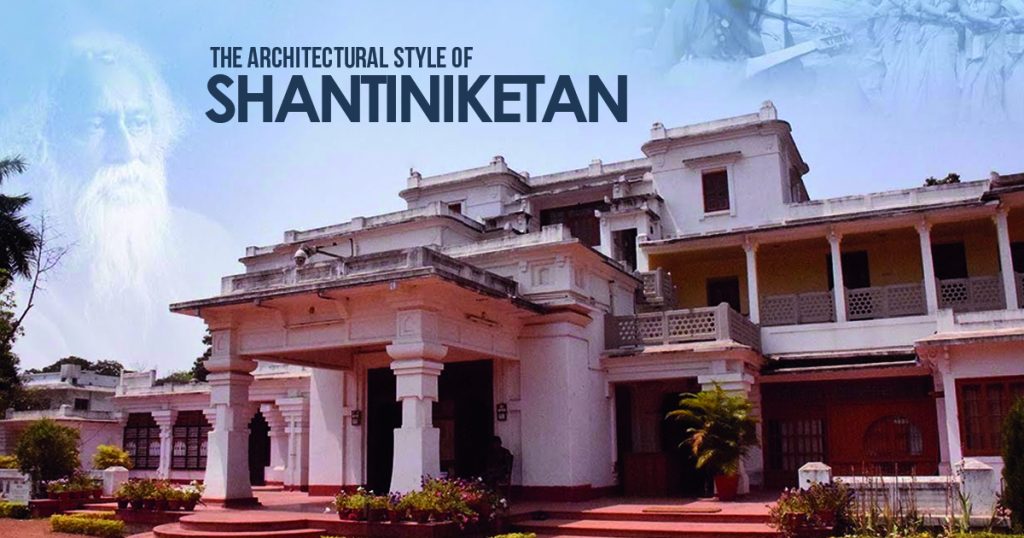
-
Location: Shantiniketan is a small town located in the Birbhum district of West Bengal, known for its serene and tranquil environment.
-
Foundation: Shantiniketan was founded by Nobel laureate Rabindranath Tagore in 1901. He established an open-air school here, later developing it into Visva Bharati University.
-
Visva Bharati University: The town is home to Visva Bharati University, a renowned institution that blends Indian and Western educational philosophies. It promotes education, art, and culture.
-
Rabindranath Tagore: Shantiniketan is closely associated with Rabindranath Tagore, who wrote many of his literary works here. His former residence, “Uttarayan,” is now a museum showcasing his life and works.
-
Cultural Hub: Shantiniketan is a cultural hub known for its artistic and literary heritage. It hosts various cultural events, including the famous Poush Mela and Rabindra Jayanti celebrations.
-
Art and Craft: The town is known for its vibrant art and craft traditions, including music, dance, pottery, and textiles. The Kala Bhavana, an art college within Visva Bharati University, is a center for artistic pursuits.
-
Surrounding Nature: Shantiniketan is surrounded by natural beauty, including dense forests, gardens, and water bodies. The presence of the Kopai River adds to the town’s charm.
-
Ashram Complex: Shantiniketan has an ashram complex called “Santiniketan Ashram,” where Tagore’s vision of education and spirituality is celebrated. It’s a place for meditation and reflection.
-
Rabindra Bhavan: Rabindra Bhavan is a cultural center and repository of Tagore’s literary works, paintings, and manuscripts. It plays a crucial role in preserving Tagore’s legacy.
-
Educational Excellence: Visva Bharati University offers courses in various disciplines, attracting students and scholars from across the country and the world.
-
Bolpur: Shantiniketan is often accessed via Bolpur, a nearby town with a railway station. Bolpur serves as a gateway to Shantiniketan for travelers.
-
Tourist Attraction: Shantiniketan is a popular tourist destination, drawing visitors interested in art, culture, spirituality, and the legacy of Rabindranath Tagore.
-
Tagore’s Vision: Shantiniketan reflects Tagore’s vision of a holistic education system that harmonizes nature, culture, and spirituality.
7. Science City:
Discover the wonders of science at Science City Kolkata, where fun and learning go hand in hand. 🚀🔬 #ScienceCity #LearningIsFun
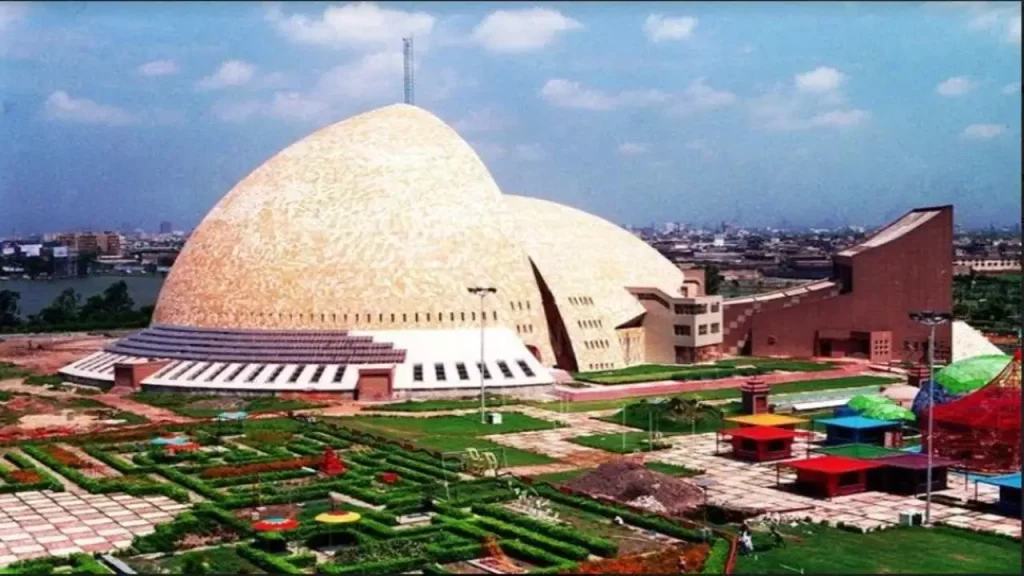
-
Location: Science City is located in Kolkata, West Bengal, India, and is a prominent science and technology center in the region.
-
Inauguration: It was inaugurated on July 1, 1997, and has since become a popular destination for both education and entertainment.
-
Objective: Science City was established with the aim of promoting scientific knowledge and fostering scientific temper among the public, especially young people.
-
Architecture: The complex features a unique and futuristic architectural design with modern facilities, making it a visually appealing attraction.
-
Interactive Exhibits: Science City offers a wide range of interactive exhibits and hands-on activities across various scientific disciplines, including physics, biology, astronomy, and more.
-
Space Odyssey: One of the main attractions within Science City is the Space Odyssey, which includes a Space Theater with a dome-shaped screen for immersive space shows.
-
Evolution Park: The Evolution Park is an outdoor area that presents the evolution of life on Earth through life-sized dinosaur models and other exhibits.
-
Earth Exploration Hall: This hall explores the geology and natural resources of our planet, providing insight into Earth’s processes and history.
-
Science Shows: Science City regularly hosts science shows, demonstrations, and workshops to engage and educate visitors of all ages.
-
3D Vision Theater: It features a 3D Vision Theater where visitors can experience 3D movies related to science and nature.
-
Astronomical Observatory: Science City has an astronomical observatory with telescopes for observing celestial objects, making it a great place for astronomy enthusiasts.
-
Convention Center: The complex also includes a convention center that hosts scientific conferences, seminars, and educational events.
-
Educational Programs: Science City offers educational programs for schools and students, promoting scientific curiosity and learning.
-
Botanical Garden: Adjacent to Science City, there is a botanical garden with a wide variety of plant species, providing a peaceful and green space for visitors.
-
Planetarium: The Birla Planetarium is located nearby and is often visited in conjunction with Science City for a comprehensive science experience.
-
Visitor Amenities: Science City has facilities like cafeterias, souvenir shops, and parking areas to enhance the visitor experience.
-
Accessibility: It is easily accessible by public transportation, including buses and the Kolkata Metro.
8. Birla Mandir:
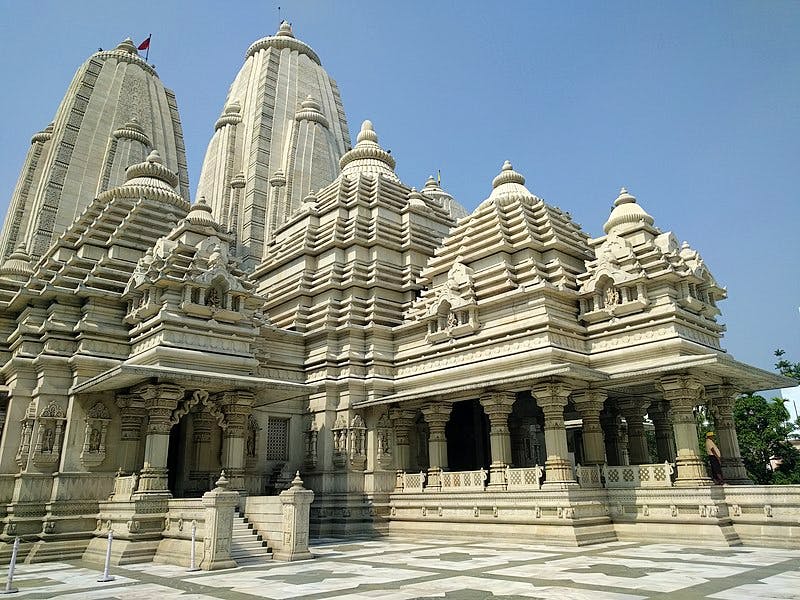
-
Location: The Birla Mandir is situated on Asutosh Chowdhury Avenue, near Ballygunge, in Kolkata. It is easily accessible from various parts of the city.
-
Architectural Style: The temple is built in the traditional Orissan style of architecture. It features intricately carved stonework, ornate spires, and beautiful sculptures.
-
Dedication: The Birla Mandir is dedicated to Lord Lakshmi Narayan, a form of Lord Vishnu (Narayan) and Goddess Lakshmi (the Goddess of Wealth and Prosperity).
-
Construction: The temple was built by the Birla family, a prominent industrialist family in India. It was constructed in the 1970s and is made of white marble.
-
Inner Sanctum: The temple houses idols of Lord Lakshmi Narayan, along with other deities such as Lord Shiva, Goddess Durga, Lord Krishna, and Lord Ganesha.
-
Idol: The main deity, Lord Lakshmi Narayan, is adorned with intricate jewelry and garments, making the idol visually stunning.
-
Beautiful Surroundings: The temple is set in a lush garden with well-maintained landscaping, adding to its serene ambiance.
-
Visitors: Birla Mandir is open to visitors of all religions, and it is a popular attraction for both tourists and devotees.
-
Religious Activities: Regular religious ceremonies, pujas, and aarti (rituals) are performed at the temple, making it a place of worship and spirituality.
-
Festivals: The temple celebrates Hindu festivals with great enthusiasm, particularly during Diwali and Janmashtami.
-
Photography: The temple’s stunning architecture and surroundings make it a popular spot for photography enthusiasts.
-
Peaceful Atmosphere: Visitors often describe the Birla Mandir as a place of tranquility and spiritual solace amidst the hustle and bustle of Kolkata.
-
Panoramic View: The temple offers a panoramic view of the city from its terrace, making it a great spot for enjoying the cityscape.
-
Visitor Facilities: The temple provides facilities such as a shoe stand, a visitor’s waiting area, and a small bookshop for religious texts.
9. Jorasanko Thakur Bari:
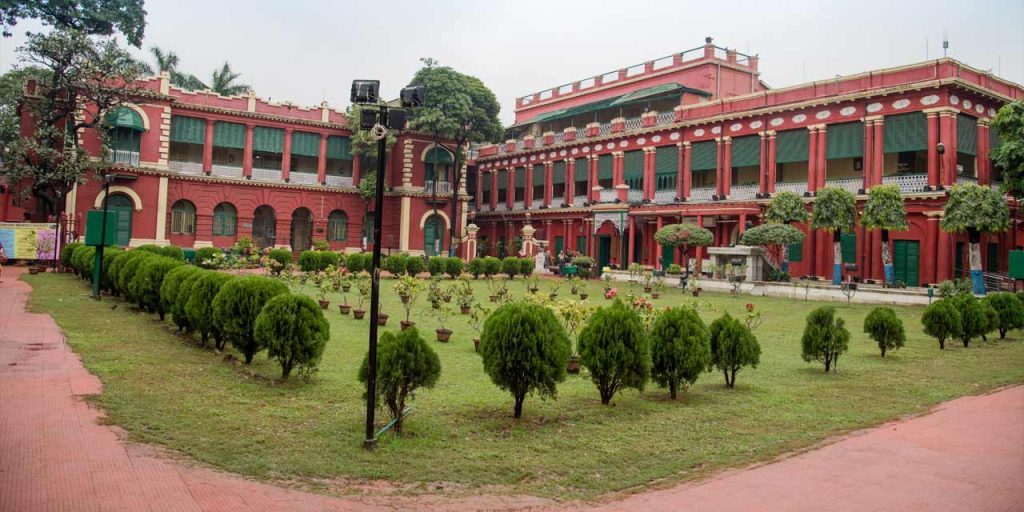
-
Location: Jorasanko Thakur Bari is located in the Jorasanko neighborhood of north Kolkata. It is a significant historical site in the city.
-
Historical Significance: The mansion was the ancestral home of the Tagore family and played a pivotal role in the cultural and literary history of Bengal.
-
Birthplace of Rabindranath Tagore: Rabindranath Tagore, one of India’s most celebrated poets and the composer of the national anthems of both India and Bangladesh, was born in Jorasanko Thakur Bari on May 7, 1861.
-
Architectural Style: The mansion is an excellent example of traditional Bengali architecture, featuring a central courtyard and a large, open veranda. It reflects the traditional zamindar (landlord) lifestyle of the Tagore family.
-
Preservation: The mansion has been preserved as a museum, providing visitors with insight into the life and works of Rabindranath Tagore and his family.
-
Exhibits: Jorasanko Thakur Bari houses a variety of artifacts, including paintings, manuscripts, personal belongings of Rabindranath Tagore, and historical documents.
-
Tagore’s Paintings: The museum features an extensive collection of Tagore’s paintings, showcasing his talents as an artist in addition to being a renowned writer.
-
Personal Library: Visitors can see the personal library of Rabindranath Tagore, which includes a vast collection of books and manuscripts.
-
Courtyard Theater: A courtyard theater within the mansion hosts cultural programs, performances, and events, keeping alive the artistic legacy of the Tagore family.
-
Educational and Cultural Center: Jorasanko Thakur Bari is not just a museum but also an educational and cultural center dedicated to promoting Tagore’s philosophy and artistic contributions.
-
Festivals: The museum hosts various cultural events and festivals, particularly during Rabindra Jayanti (Tagore’s birthday) and other significant occasions.
-
Visitor Experience: It offers a unique and immersive experience for visitors, allowing them to explore the life, literature, and art of Rabindranath Tagore.
-
Tagore’s Influence: The Tagore family’s contributions extended beyond literature and art and had a profound impact on the social and cultural fabric of Bengal and India.
10. Rabindra Sarovar:
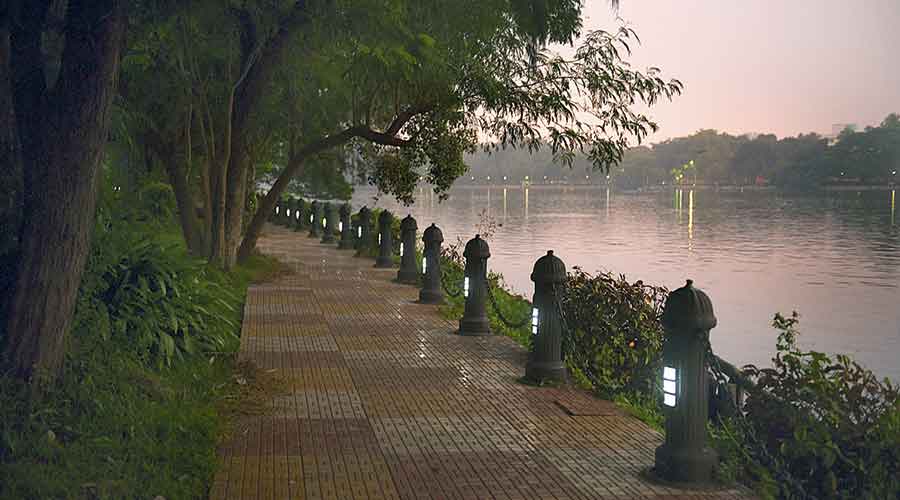
-
Location: Jorasanko Thakur Bari is located in the Jorasanko neighborhood of north Kolkata. It is a significant historical site in the city.
-
Historical Significance: The mansion was the ancestral home of the Tagore family and played a pivotal role in the cultural and literary history of Bengal.
-
Birthplace of Rabindranath Tagore: Rabindranath Tagore, one of India’s most celebrated poets and the composer of the national anthems of both India and Bangladesh, was born in Jorasanko Thakur Bari on May 7, 1861.
-
Architectural Style: The mansion is an excellent example of traditional Bengali architecture, featuring a central courtyard and a large, open veranda. It reflects the traditional zamindar (landlord) lifestyle of the Tagore family.
-
Preservation: The mansion has been preserved as a museum, providing visitors with insight into the life and works of Rabindranath Tagore and his family.
-
Exhibits: Jorasanko Thakur Bari houses a variety of artifacts, including paintings, manuscripts, personal belongings of Rabindranath Tagore, and historical documents.
-
Tagore’s Paintings: The museum features an extensive collection of Tagore’s paintings, showcasing his talents as an artist in addition to being a renowned writer.
-
Personal Library: Visitors can see the personal library of Rabindranath Tagore, which includes a vast collection of books and manuscripts.
-
Courtyard Theater: A courtyard theater within the mansion hosts cultural programs, performances, and events, keeping alive the artistic legacy of the Tagore family.
-
Educational and Cultural Center: Jorasanko Thakur Bari is not just a museum but also an educational and cultural center dedicated to promoting Tagore’s philosophy and artistic contributions.
-
Festivals: The museum hosts various cultural events and festivals, particularly during Rabindra Jayanti (Tagore’s birthday) and other significant occasions.
-
Visitor Experience: It offers a unique and immersive experience for visitors, allowing them to explore the life, literature, and art of Rabindranath Tagore.
-
Tagore’s Influence: The Tagore family’s contributions extended beyond literature and art and had a profound impact on the social and cultural fabric of Bengal and India.
11. Alipore Zoo:
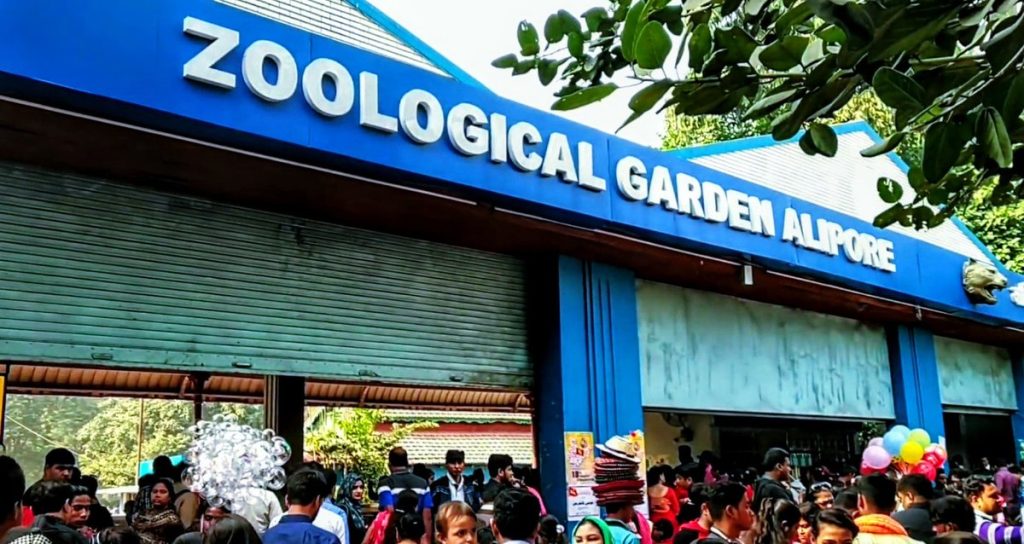
-
Location: Alipore Zoo is situated in the Alipore area of Kolkata, making it easily accessible from various parts of the city.
-
Establishment: It was established in 1876, making it one of the oldest zoos in India. The zoo was opened to the public in 1876 and was inaugurated by the then Prince of Wales, Albert Edward.
-
Size: The zoo covers an extensive area and is home to a wide variety of animals and birds.
-
Diverse Collection: Alipore Zoo houses a diverse collection of animal species, including mammals, birds, reptiles, and amphibians. It’s a popular destination for wildlife enthusiasts and families.
-
Rare and Endangered Species: The zoo plays an important role in the conservation of wildlife and houses some rare and endangered species, including the royal Bengal tiger and the Indian rhinoceros.
-
Open Enclosures: Many of the enclosures in the zoo have open designs that simulate the natural habitat of the animals. This provides a more natural and humane environment for the animals.
-
Aviary: Alipore Zoo features an extensive aviary, housing a wide variety of bird species, including colorful parrots and exotic birds.
-
Butterfly Garden: The zoo includes a butterfly garden, where visitors can witness the different stages of butterfly development and see a variety of beautiful butterflies.
-
Conservation Efforts: The zoo is involved in various conservation and breeding programs, contributing to the preservation of endangered species.
-
Educational Programs: Alipore Zoo offers educational programs and guided tours to create awareness about wildlife conservation and animal behavior.
-
Botanical Garden: Adjacent to the zoo is the Alipore Horticultural Society, which maintains a botanical garden with a wide variety of plants and trees.
-
Picnic Spot: The zoo is a popular spot for family outings and picnics. It offers a serene and green environment for relaxation and leisure.
-
Infrastructure Development: In recent years, there have been efforts to modernize and upgrade the zoo’s infrastructure to provide better living conditions for the animals and a more enjoyable experience for visitors.
-
Accessibility: The zoo is well-connected by public transportation, and it is a short distance from the Alipore metro station.
12. New Town Eco Park:
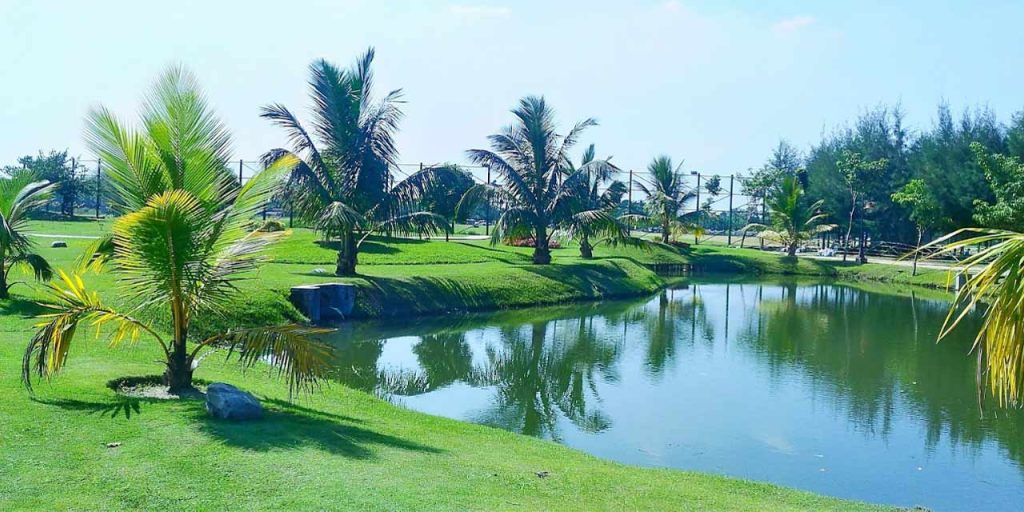
-
Location: New Town Eco Park is situated in the New Town region of Kolkata, making it easily accessible from various parts of the city.
-
Size: The park covers a vast area of approximately 480 acres, making it one of the largest urban parks in India.
-
Concept: New Town Eco Park is designed as an ecologically sensitive and sustainable green space that integrates nature, culture, and recreation.
-
Three Major Zones: The park is divided into three primary zones: Urban, Wetlands, and Terrestrial, each representing a different ecological theme.
-
Wetlands: The Wetlands section of the park features a large waterbody with an island at its center, designed to replicate the rich biodiversity of wetland ecosystems.
-
Conservation: The park serves as a hub for biodiversity conservation and features a diversity of plant and animal species, including several bird species.
-
Eco-Island: The Eco-Island in the Wetlands zone serves as a sanctuary for migratory birds and other wildlife.
-
Culture: The Urban section includes cultural attractions like replicas of traditional Bengal architecture and sculptures, providing insights into the region’s heritage and history.
-
Recreational Facilities: Visitors can enjoy various recreational activities in the park, such as boating, nature walks, cycling, and picnics.
-
Musical Fountain: The park features a musical fountain that comes to life in the evening, offering a captivating audio-visual experience.
-
Butterfly Park: New Town Eco Park houses a butterfly park where visitors can witness the life cycle of butterflies and various species.
-
Mist House: The Mist House provides a unique experience with mist and fog, creating a cool and refreshing environment.
-
Aqua Zone: The Aqua Zone is an aquatic attraction with various water features, including artificial waterfalls and ponds.
-
Flower Garden: The park has beautifully landscaped gardens with a wide variety of flowers and plants, providing a scenic and colorful atmosphere.
-
Visitor Facilities: The park provides visitor amenities like food stalls, restrooms, seating areas, and parking facilities.
-
Education and Research: New Town Eco Park is also involved in educational and research activities related to environmental conservation and sustainable practices.
-
Accessibility: The park is well-connected by public transportation, including buses and the Kolkata Metro.
Visit More Places:
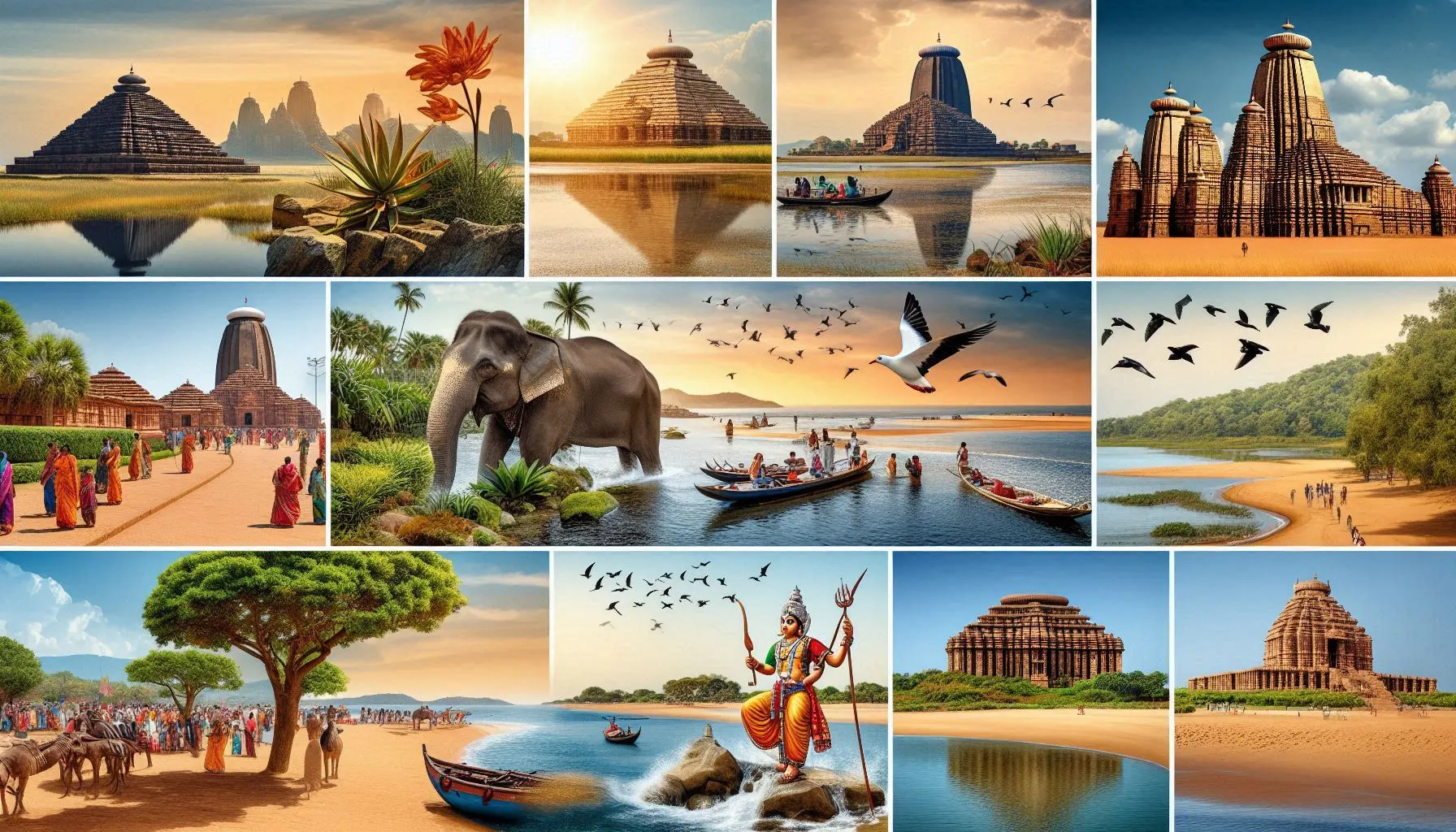
Exploring Amazing Odisha: Top 10 Must-Visit Tourist Destinations
Exploring Amazing Odisha: Top 10 Must-Visit Tourist Destinations
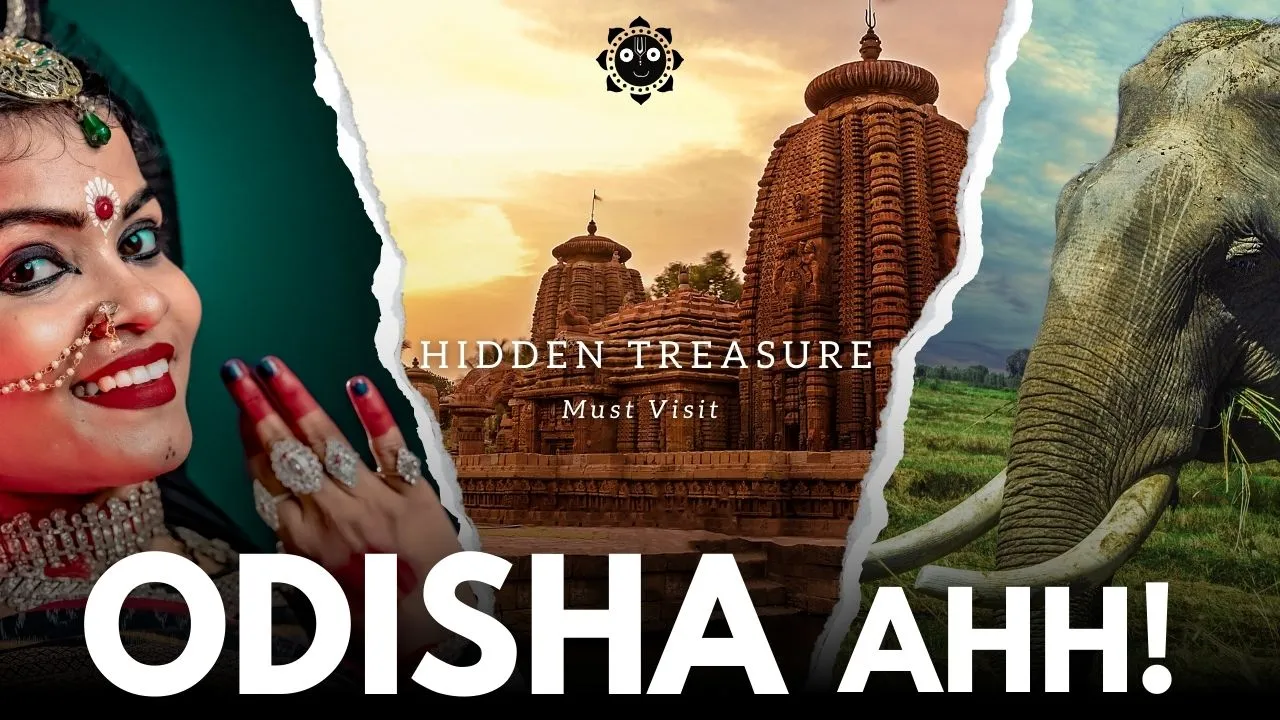
Odisha Tourism - A beautiful Journey Through Temples, Beaches, and Tribes
Odisha Tourism - A beautiful Journey Through Temples, Beaches, and Tribes

Top 10 Tourist Places in Sikkim - Adventure, Culture, Beauty
Top 10 Tourist Places in Sikkim - Adventure, Culture, Beauty
